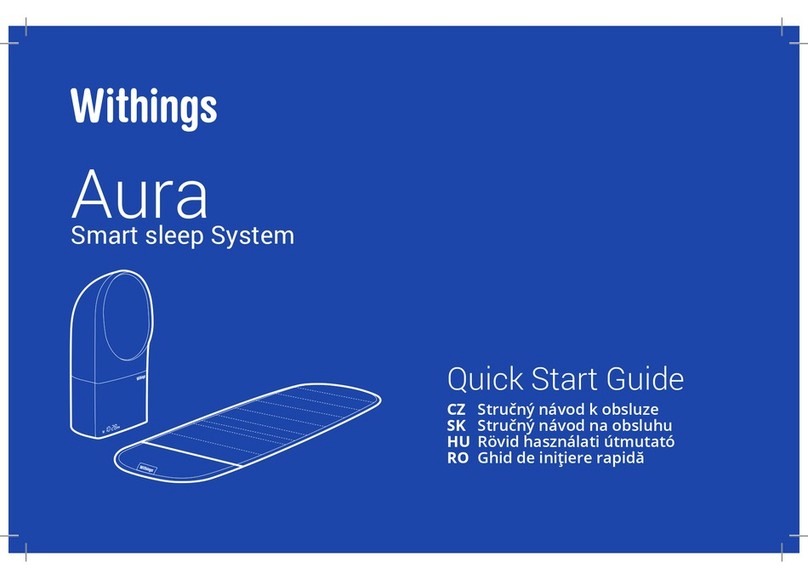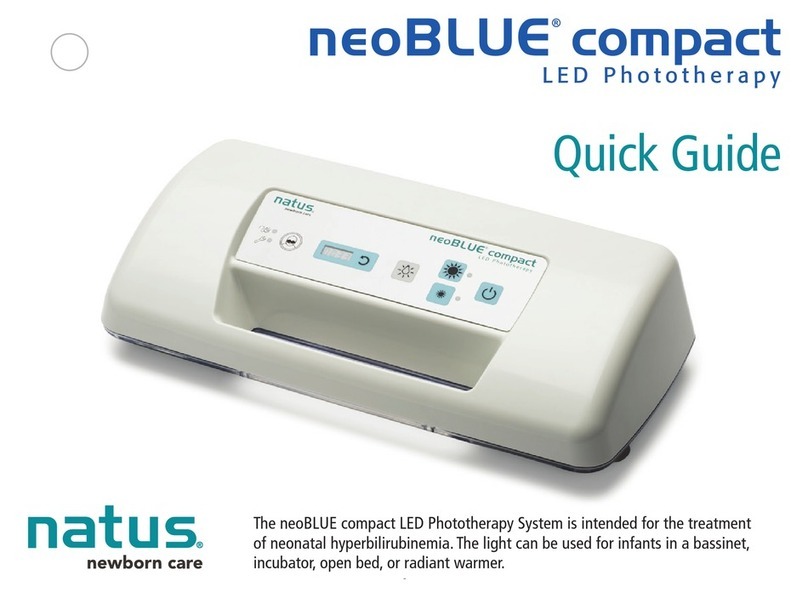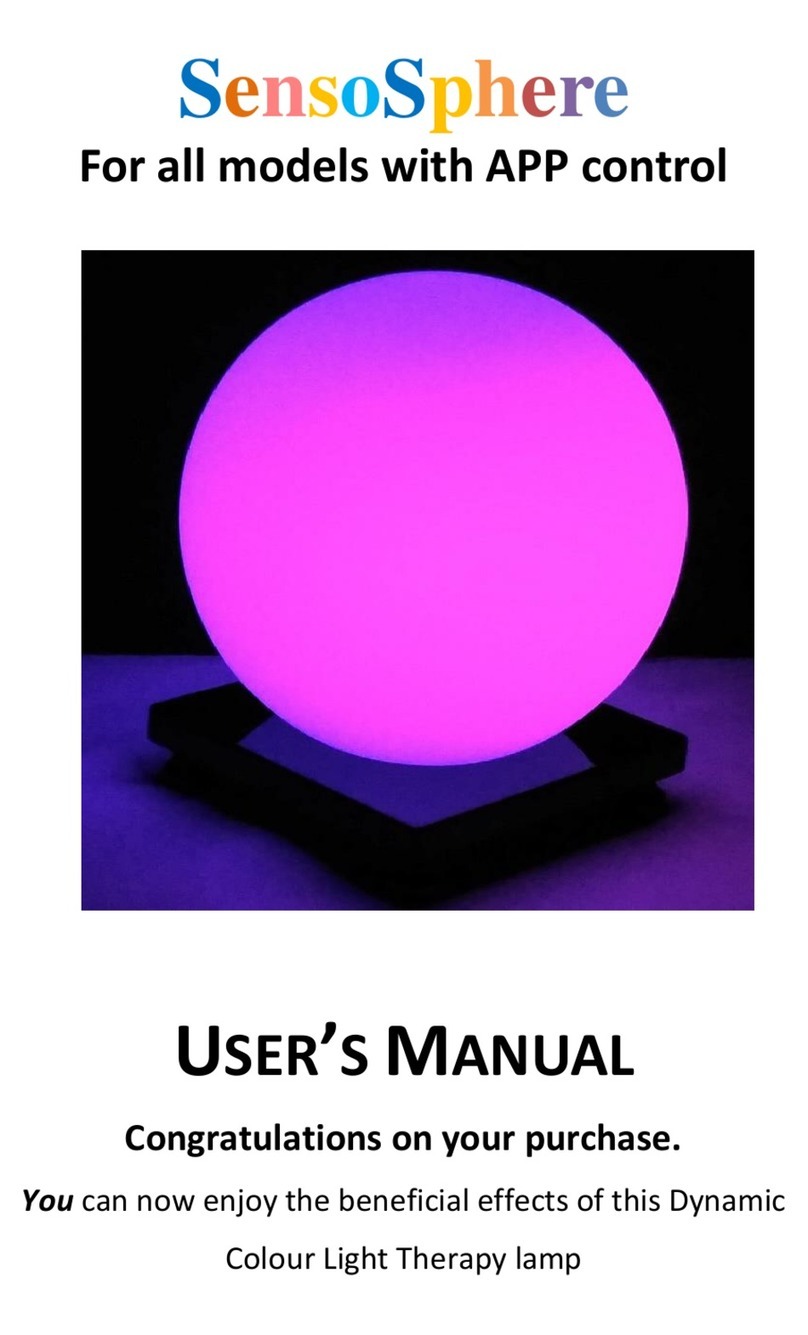BIOFLEX 180 User manual

User Manual
THE BIOFLEX 180
APersonalTherapy System

2
THE BIOFLEX 180
A Personal Therapy System
USA
Meditech International Inc.
Copyright © 2016 Meditech International Inc. All rights reserved.
No part of this publication may be reproduced, translated into another
language, stored in a retrieval system, or transmitted, in any form or by
any means, electronic, mechanical, photocopying, recording, or otherwise
without the prior written consent of Meditech International Inc.
Every precaution has been taken in the preparation of this publication.
Meditech assumes no responsibility for errors or omissions. Neither is any
liability assumed for damages resulting from the use of the information
contained herein.
All brand and product names mentioned are used for identication
purposes only and are trademarks or registered trademarks of their
respective holders.
Personal User Manual CAN (MN-421.002)
1st Edition November 2015
2nd Edition March 2016

3
Table Of Contents
Introduction 4
System Basics 5
Planning Your Treatments 6
Conditions Treated and Placement of Array 9
What’s In The Box 22
Connecting The System 23
Initiating Therapy 25
Application Of Treatment 26
Important Information 27
System Troubleshooting 28
System Specications 30
Electromagnetic Compatibility (EMC) 34
BioFlex Personal Parts List 35
Notes 36

4
Introduction
The BioFlex 180, for the rst time in the history of the application of light
therapy, has the capacity to deliver automated, pre-programmed treatment
protocols for an extensive number of medical conditions. The system can
be easily applied at home, while travelling or otherwise engaged.
The unit is a highly sophisticated derivative product of the BioFlex Series
of Professional Laser Therapy Systems that have achieved global acclaim
in the mainstream medical community, based on the eective resolution
of many challenging pathologies.
Currently BioFlex Systems are utilized in the eld of Laser Medicine by
health care professionals in over fty countries. The technology is widely
applicable in the treatment of musculoskeletal conditions, arthritis, sports
and soft tissue injuries and many other both complex and routine medical
problems.
At Meditech International we view this system as a major advance in
providing immediate relief of pain and other symptoms. An extensive
range of medical problems can be rapidly resolved -- the result of the
initiation of a cascade of physiological activities leading to the restoration
of normal cell structure and function. The system is also instrumental in
providing preventative and maintenance therapy of body tissues.
With the acquisition of this unit, you hold the key to a rapid resolution for
many of your medical problems, at your ngertips.
The History of Meditech International
Inc.
The design, manufacture and therapeutic application
of BioFlex Systems is the primary focus of the
company - founded by Fred Kahn, MD, in 1989.
Dr. Kahn is a Fellow of The Royal College of Surgeons
of Canada, a Diplomate of the American Board of
Surgery and has been elected to The Spinal Hall of
Fame for his pioneering eorts in the resolution of
back problems.
Prior to initiating research in the eld of Laser Technology, he was engaged
in a surgical practice specializing in trauma and vascular reconstructive
surgery over the course of twenty-ve years.

5
During the past quarter of a century, Dr. Kahn has assembled an innovative
team of scientists, clinicians, software and electro-photonic specialists in
order to standardize and advance the eld of “Laser Medicine”.
During the rst ten years of its existence, the company was based at
Ryerson University in Toronto, Canada where it developed and veried its
initial concepts.
Dr. Kahn has published four texts on the topic of Laser Medicine, along
with numerous articles relating to this emerging technology and as a result
of this process, has become a recognized leader in this eld.
System Basics
The BioFlex 180 is a high performance therapy system that is aordable,
cost-eective and easy to use. The ergonomically designed Controller Unit
is connected to a exible Treatment Array in order to deliver a patented
sequence of Red and Infrared light therapy to injured or diseased tissue
automatically.
Research-based, clincally proven protocols have been developed for
12 anatomical regions, encompassing an extensive number of medical
problems. Four protocol stages are available to treat each area.
The Treatment Array’s soft, exible composition readily adjusts to the
congurations of the anatomical area to which it is applied.
Each treatment is initiated by the emission of a stream of Red Light,
automatically followed by Infrared Light. The latter is not visible to the
human eye.
Once the treatment has been completed this will be conrmed by a sound
marking that event.

6
Planning Your Treatments
Light therapy is most eective when the Treatment Array is placed rmly
over the dermis and directly over the focal point of the pain. 60% of the
treatment time, both Red and Infrared, should be devoted to that general
region. The remaining treatment time may be extended more widely to
the adjacent areas and if possible, the region opposite to the focus of the
pain. This will make certain that the transmission of all therapy is directed
to both the supercial and deeper tissue layers of the area involved.
Stages of Treatment
There are 4 pre-programmed Stages for each of the 12 treatment areas
depicted on the Controller Unit. Each Stage presents specic protocols
designed to treat that area or condition. Stage 1 should be used initially
and Stage 2 may not be required if the treatment is eective.
Generally treatment is applied once daily for the rst 4-5 days. If after 5
or more treatments improvement is not signicant, one may advance to
Stage 2 and after a similar or even greater number of treatments, one may
advance to Stage 3 and subsequently, as clinically indicated, to Stage 4.
Variations in Frequency of Application
In some instances, particularly when pain is acute, two treatment sessions
may be applied in sequence or treatment can be administered twice daily
for four or more days, allowing 8-10 hours between sessions. Applying
treatment more than twice over a 24-hour period should be avoided.
As your symptoms diminish with continuing therapy, the frequency of
treatments may be gradually reduced. Often continuing therapy once or
twice each week will continue the healing process and avoid recurrence
of symptoms. Once symptoms have disappeared completely, occasional
maintenance therapy may be benecial.

7
Additional Instructions:
Some of these steps have already been described but are repeated for
conrmation.
• 60% of the Red and Infrared treatment time prescribed for each
condition should be devoted to the area where the pain and other
symptoms are most severe. The remaining period of time should be
applied more widely to the adjacent areas.
• When treating joint problems particularly, surround the entire joint,
devoting 2/3 or even more of the treatment time to the area most
severely aected.
• All areas are treated sequentially with the application of the Red,
followed by the Infrared Light, automatically.
• Placement of the Treatment Arrays can be performed according to the
diagrams demonstrated on pages 10-22, These placements provide
guidelines that are more specic.
• As one becomes more familiar with utilization of the system, placements
will be largely dictated by the response of the tissues treated. These
are characterized by the reduction in pain, swelling, discolouration,
etc. and an improving range of motion.
• For most protocols, 40% of each treatment phase utilizes Red light
and the other 60% Infrared. 2-3 minutes of each can be devoted to
the placement locations depicted in the diagrams included on pages
10-22.
To summarize - there are two methods of application of the treatment that
can be followed. One may simply move placement of the Array every 2-5
minutes to cover the area being treated widely.
Conversely, one may follow the more exacting placements depicted on
pages 10-22, devoting 2-3 minutes of Red light to each placement and 3-4
minutes of Infrared light.
Either method is acceptable and should achieve satisfactory results.
All placements may be manual or maintained with the straps supplied.
Whichever course is followed, it is important to move the Arrays periodically
to cover the area being treated completely.
Should you require further guidance, please call a Meditech consultant at
1-844-770-0177.

8
Possible Reactions and Side Eects
The dermis may become discolored, secondary to physiological changes.
This condition is of minimal concern and should disappear subsequent to
treatment.
One can use the glasses provided for ocular protection, however they are
not essential. It is generally good practice to wear them when treating the
upper body regions or the facial area.
Termination of Treatment
Treatments end automatically, unless one presses the Stop button prior to
that event.
The Treatment Array may be cleaned after each treatment using an alcohol
wipe or a soft, damp cloth. A mild disinfectant may also be used. Do not
immerse or rinse the Treatment Array in water.
The straps may be cleaned in a washing machine using the gentle cycle.
Allow straps to air dry post-washing.
Tips Regarding Use:
Always be patient with regard to improvement. Sometimes relief may be
dramatic and at other times it may be slow with only gradual reduction
of symptoms after multiple treatments.
If symptoms are acute, rest as much as possible and avoid movements
which may aggravate the symptoms.
At all times remember that patience is a virtue, along with persistence.
Some conditions and patients respond more rapidly than others but with
due care, a positive response is invariably achieved.

9
Conditions Treated and
Placement of Array
Intended Use
The system is primarily utilized to treat localized pathologies characterized
by pain and other symptoms. It may also be placed over the area of the
spine innervating the area that is symptomatic.
More specialized conditions involving each of the areas for which protocols
are provided will be described in the appropriate sections. (p.10-21)
The BioFlex Personal is a medical device designed for safe, easy and
eective temporary relief of minor muscle and joint pain, arthritis, muscle
spasm, stiness and promoting muscle relaxation in the body.

10
Face
Common Conditions Treated
TMJ Pain
Placements
A and B direct the location of the Array when facial structures are involved.
(Avoid placements close to eyes)
A
B
Oblique
Transverse

11
Shoulder
Common Conditions Treated
Joint Pain Muscle Pain
Arthritis Tendonitis
Soft Tissue Injuries
Placements
A to C direct the location of the Array when treating the shoulder joint.
A
A
C
B
Superior
Vertical
Lateral

12
Elbow
Common Conditions Treated
Joint Pain
Tennis Elbow
Soft Tissue Injuries
Muscle Pain
Arthritis
Tendonitis
Placements
A to D direct the location of the Array when treating the elbow joint.
Either combination of placements are acceptable (i.e. A and B or C and D).
A B
C D
Medial
Posterior
Lateral
Anterior

13
Wrist
Common Conditions Treated
Joint Pain Tendonitis
Soft Tissue Injuries Arthritis
Placements
A to D direct the location of the Array when treating the wrist joint.
Placements A and B are preferable however in some instances C and D
may be more appropriate.
A
C D
B
A
B
D
Dorsal Ventral (Palmar)
Dorsal Longitudinal Ventral Longitudinal

14
Hand/Digits
Common Conditions Treated
Joint Pain Tendonitis
Soft Tissue injuries Arthritis
Placements
A and B direct the location of the Array when treating the hands.
The wrist and hand/digits may be treated separately or jointly depending
on the dimensions of the area involved.
In some situations C and D may be preferable. Generally cover all the small
joints involved.
A
CD
B
Dorsal Transverse Palmar Transverse
Palmar Longitudinal
Dorsal Longitudinal

15
Foot
Common Conditions Treated
Arthritis
Joint Pain
Soft Tissue Injuries
Tendonitis
Muscle Pain
Placements
A to D direct the location of the Array when treating the foot.
Place according to major area of pain.
A
C
B
D
Dorsal Transverse
Plantar Longitudinal Dorsal Longitudinal (Mid-foot)
Plantar Transverse (Forefoot)

16
Ankle
Common Conditions Treated
Arthritis Tendonitis
Joint Pain Muscle Pain
Soft Tissue Injuries
Placements
A to C direct the location of the Array when treating the ankle.
A B
C
C
PosteriorAnterior
Inferior

17
Cervical Spine (Neck)
Common Conditions Treated
Arthritis
Joint Pain
Soft Tissue Injuries
Tendonitis
Muscle Pain
Placements
A to D direct the location of the Array when treating the neck.
A B
C D
Vertical
Right Lateral
Transverse
Left Lateral

18
Thoracic Spine (Upper Back)
Common Conditions Treated
Soft Tissue Injuries
Muscle Pain
Muscle Spasm
Placements
A and B direct the location of the Array when treating the upper back.
Schematic outlines indicate additional placements.
A
B
Vertical 1 or 2 placements
Transverse 1 or 2 placements

19
Lumbar Spine (Lower Back)
Common Conditions Treated
Soft Tissue Injuries
Muscle Pain Muscle Spasm
Placements
A to D direct the location of the Array when treating the lower back.
Schematic outlines indicate additional placements.
A B
C D
Transverse
Left Oblique(sciatic)
Vertical
Right Oblique(sciatic)

20
Hip
Common Conditions Treated
Arthritis
Joint Pain
Soft Tissue Injuries
Tendonitis
Muscle Pain
Placements
A to F direct the location of the Array when treating the hip joint.
Treatment can be applied using transverse or vertical placements extending
from the mid-line anteriorly to the mid-line posteriorly. Vertical approach
may require 4 or 5 individual placements.
A
BC
F
E
D
Lateral
Lateral
Anterior
Transverse Placements
Vertical Placements
Anterior
Posterior
Posterior
E
B
D
Table of contents






